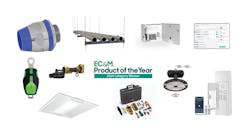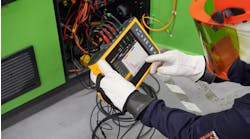When voltage sags occur inside or outside of a facility, properly placed power quality mitigation technology will save sensitive equipment from costly shutdowns. The cost of this mitigation equipment varies, so it’s prudent to start evaluating the lowest cost solution first. It is possible to install mitigation devices to protect an entire piece of equipment or even the whole facility. However, this is cost-prohibitive to most industries and doesn’t always yield the best results. Locating the mitigation device closer to the sensitive component in the equipment provides a lower cost, higher return on investment. Two of the most sensitive components in motor control systems are the “ice cube style” control relay and the contactor/motor starter. The typical drop out point is between 60% to 75% of nominal voltage, with 24V coils typically holding in the lowest.
Coil hold-in devices were created specifically to solve the voltage sag problem with control relays and contactor/motor starters. There are two designs of low-cost coil hold-in devices available. Both designs operate to 25% of nominal voltage, providing continuous ride-through at that level. The cut-out point of 25% was considered to allow for safe operation when the stop or emergency stop is activated.
Design A is used primarily with contactors and motor starters. It is a separate device that is wired into the contactor coil hot and neutral. The contactor coil resistance must be identified to match properly. Design B is intended as a direct replacement for control relays.
The coil hold-in base plugs into the standard 8-pin relay base and converts alternating current (AC) to direct current (DC), using a DC relay. The DC relay is a standard off-the-shelf style for easy replacement. Be cautious, though, as this style is a few inches taller than standard relays and may not directly fit in some control cabinets.
The cost of coil hold-in devices ranges between $100 to $200 each and they are approximately $200 to install. Design B devices install much faster, which lowers the installation cost. There are really no expected ongoing maintenance costs for either device.
Solving voltage sag issues with low-cost solutions like these will create a faster return on investment that pays for itself after only a few successfully mitigated voltage sags.
Glenn is a power quality consultant for EC&M. He can be reached at [email protected].



